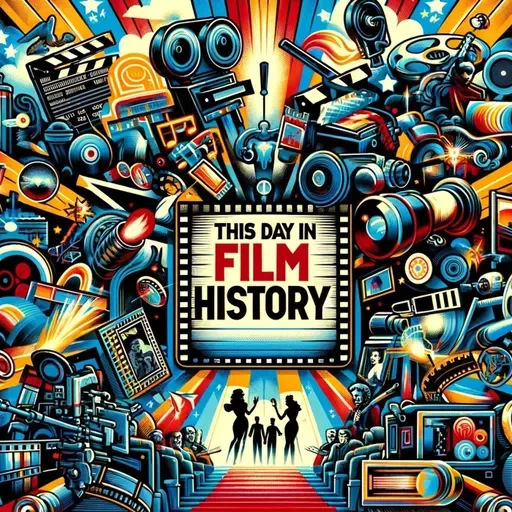
About
On October 18th, 1927, one of the most iconic films in cinema history premiered at the Warner Theatre in New York City: "The Jazz Singer." This groundbreaking movie, directed by Alan Crosland and starring Al Jolson, is often credited as being the first feature-length "talkie," or motion picture with synchronized dialogue and music.
"The Jazz Singer" tells the story of Jakie Rabinowitz, a young Jewish man who defies his family's traditions to pursue his dream of becoming a jazz singer. The film's plot was inspired by the life of Al Jolson, who was a popular vaudeville and recording artist at the time.
What made "The Jazz Singer" so revolutionary was its use of synchronized sound. While there had been earlier short films with synchronized sound, this was the first feature-length movie to incorporate this technology. The film features several musical numbers performed by Jolson, as well as some scenes with synchronized dialogue.
The most famous scene in the movie is when Jakie, played by Jolson, performs the song "My Mammy" in blackface. While the use of blackface is rightfully criticized today, it was a common practice in entertainment at the time. Despite this controversial aspect, the scene showcased the emotional power of synchronized sound in film.
"The Jazz Singer" was a massive success, grossing over $2.6 million and demonstrating the potential of sound in movies. Its impact on the film industry cannot be overstated. It signaled the end of the silent film era and ushered in a new age of "talkies." Studios quickly scrambled to adopt this new technology, and within just a few years, silent films had become a rarity.
The film's success also had a significant impact on Jewish representation in American culture. It was one of the first mainstream films to feature Jewish characters and themes, and its success helped pave the way for greater Jewish representation in Hollywood.
In 1996, "The Jazz Singer" was selected for preservation in the National Film Registry by the Library of Congress, recognizing its cultural, historical, and aesthetic significance. Today, it remains a landmark film that forever changed the course of cinema history.
Some great Deals https://amzn.to/49SJ3Qs
For more check out http://www.quietplease.ai
This content was created in partnership and with the help of Artificial Intelligence AI
"The Jazz Singer" tells the story of Jakie Rabinowitz, a young Jewish man who defies his family's traditions to pursue his dream of becoming a jazz singer. The film's plot was inspired by the life of Al Jolson, who was a popular vaudeville and recording artist at the time.
What made "The Jazz Singer" so revolutionary was its use of synchronized sound. While there had been earlier short films with synchronized sound, this was the first feature-length movie to incorporate this technology. The film features several musical numbers performed by Jolson, as well as some scenes with synchronized dialogue.
The most famous scene in the movie is when Jakie, played by Jolson, performs the song "My Mammy" in blackface. While the use of blackface is rightfully criticized today, it was a common practice in entertainment at the time. Despite this controversial aspect, the scene showcased the emotional power of synchronized sound in film.
"The Jazz Singer" was a massive success, grossing over $2.6 million and demonstrating the potential of sound in movies. Its impact on the film industry cannot be overstated. It signaled the end of the silent film era and ushered in a new age of "talkies." Studios quickly scrambled to adopt this new technology, and within just a few years, silent films had become a rarity.
The film's success also had a significant impact on Jewish representation in American culture. It was one of the first mainstream films to feature Jewish characters and themes, and its success helped pave the way for greater Jewish representation in Hollywood.
In 1996, "The Jazz Singer" was selected for preservation in the National Film Registry by the Library of Congress, recognizing its cultural, historical, and aesthetic significance. Today, it remains a landmark film that forever changed the course of cinema history.
Some great Deals https://amzn.to/49SJ3Qs
For more check out http://www.quietplease.ai
This content was created in partnership and with the help of Artificial Intelligence AI